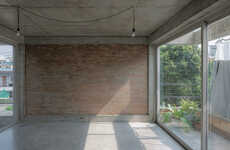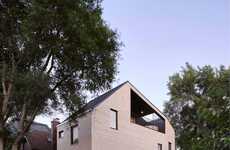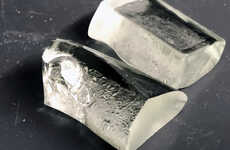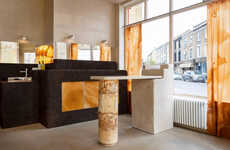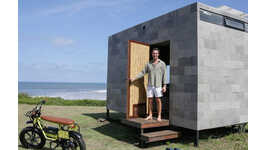

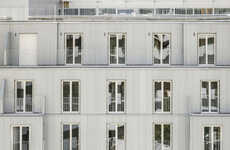

From Solar Art Installations to Self-Sustaining Homes
Jana Pijak — January 20, 2024 — Eco
These 2023 eco architecture trends range from solar art installations to self-sustaining homes.
A standout includes Berlin-based artist and architect Riccardo Mariano's Arco del Tiempo (Arch of Time) art installation. The public art piece is set to debut in Houston's East End in 2024. Standing at 100 feet, it acts as a sundial while generating 400,000kWh of solar energy annually. The project aims to achieve a net-positive impact, celebrating its break-even point and benefiting the climate and community.
When it comes to innovative materials, some notable 2023 eco architecture innovations include an eco-friendly concrete created by engineers at Washington State University. The material is made by blending traditional cement with biochar, derived from organic waste. This innovative concrete absorbs more carbon than it emits without compromising strength. LionGlass, an innovation from Penn State University, is another standout aiming to revolutionize the glass industry by eliminating carbon-containing materials and lowering glass melting temperatures. The material aims to cut manufacturing carbon footprint by nearly half and to enhance durability significantly.
For more eco architecture innovations in the year ahead, check out Trend Hunter’s 2024 Trend Report.
A standout includes Berlin-based artist and architect Riccardo Mariano's Arco del Tiempo (Arch of Time) art installation. The public art piece is set to debut in Houston's East End in 2024. Standing at 100 feet, it acts as a sundial while generating 400,000kWh of solar energy annually. The project aims to achieve a net-positive impact, celebrating its break-even point and benefiting the climate and community.
When it comes to innovative materials, some notable 2023 eco architecture innovations include an eco-friendly concrete created by engineers at Washington State University. The material is made by blending traditional cement with biochar, derived from organic waste. This innovative concrete absorbs more carbon than it emits without compromising strength. LionGlass, an innovation from Penn State University, is another standout aiming to revolutionize the glass industry by eliminating carbon-containing materials and lowering glass melting temperatures. The material aims to cut manufacturing carbon footprint by nearly half and to enhance durability significantly.
For more eco architecture innovations in the year ahead, check out Trend Hunter’s 2024 Trend Report.
6.3
Score
Popularity
Activity
Freshness









